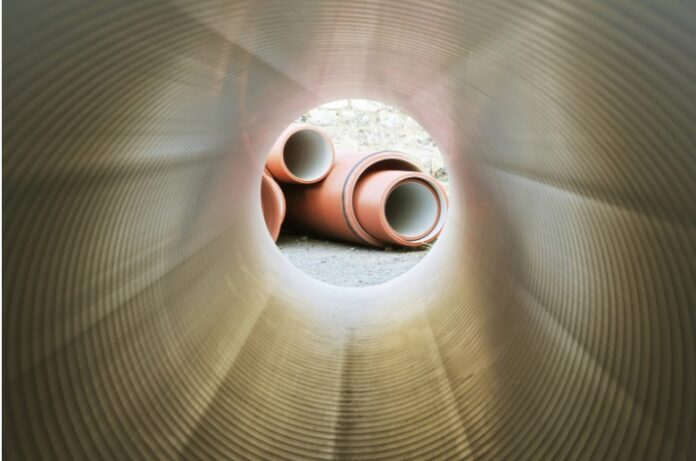Effective plumbing systems are the silent caretakers of our commercial and residential areas, operating invisibly to ensure the smooth flow of daily activities. One such development in the vast sphere of plumbing is the innovation of pipe relining, which is increasingly being recognised for its substantial economic benefits. This comprehensive guide will meticulously dissect the financial implications of choosing pipe relining. We’ll journey across the intricacies of pipe relining, understand how it saves time and labour expenses, discuss the no-dig technology’s essentials, outline the sustainability and durability of pipe relining, and finally, deliberate how it boosts property value.
Understanding the Concept of Pipe Relining
Pipe relining exemplifies plumbing advancements at their best. Instead of completely replacing a damaged pipe–which can mean considerable hours spent on excavation and installation–pipe relining allows a new and robust internal layer to be created within the existing pipe, thus giving it a new lease on life. This sophisticated practice demands specific technologically advanced materials, such as an epoxy resin blend and an inflatable pipe or liner, often referred to as a “packer.” As we surge ahead, modern technology paves the way for a strikingly potent, yet minimally intrusive process to deal with damaged pipes.
Lowered Time and Labor Expense with Pipe Relining
One of the principal boons of pipe relining is its ability to save considerable time and labour costs. Not having to dig, extract, and then reinstall a whole new pipe as in traditional methods, pipe relining allows plumbing professionals to be done with a job faster. Less time spent on a job naturally leads to a substantial reduction in labour costs making pipe relining a financially viable option. For instance, the pipe relining procedure commenced and completed within a day in suburban Sydney. In stark contrast, the traditional method of replacing the pipe would have prolonged the project over several days, leading to increased labour costs. Furthermore, the implied increase in labour productivity due to the adoption of pipe relining cannot be overlooked, as it denotes greater profitability for plumbers and plumbing companies.
Aggravations Saved Due to No Dig Technology
No-dig technology is a revolutionary aspect of pipe relining, allowing significant savings to be made by containing expenses associated with repairing excavated grounds, structures, or landscapes. The elimination of the need for digging ensures that your yard or landscape remains pristine, and the absence of remedial landscaping efforts is a testament to the economic soundness of the no-dig approach. A tangible case in point is a property owner in Melbourne, who spent almost double the expenditure on remediation costs compared to the initial pipe relining costs. The appeal of no-dig pipe relining is evident in such scenarios, where a significant reduction in remediation costs is a clear advantage.
Enhanced Lifespan Ensures Cost-Effectiveness
One of the biggest economic benefits of pipe relining is linked to its long-term sustainability. With an estimated lifespan of up to 50 years, relined pipes drastically reduce the need for continuous repair, maintenance, or replacement costs that are typically associated with conventional plumbing systems. The longevity of relined pipes ensures that consumers can enjoy cost-effectiveness in the long run. In addition, the environmental aspect attached to the process further underscores the sustainability of pipe relining. With fewer replacements and repairs needed, waste associated with discarded pipes is considerably reduced, making pipe relining a win-win for both the consumer wallet and the environment.
The Improved Property Value from Pipe Relining
Apart from the immediate cost advantages, pipe relining can also lend a considerable boost to any property’s long-term value. Modernised plumbing that involves relined pipes offers an attractive proposition to prospective buyers or tenants, and can potentially lead to an increased property valuation. Moreover, various insurance companies view pipe relining positively, which may reflect favourably on your insurance premiums. To explore the cost benefits of choosing pipe relining over replacement, consider the experience of a property owner in Brisbane. After a successful pipe relining project, the property saw an increase in value, reinforcing the potential for tangible financial gain using innovative plumbing methods.
Conclusion
In conclusion, pipe relining manifests as a game-changing, cost-effective solution in the broad landscape of plumbing services. By replacing the traditional dig-and-replace approach, it introduces significant financial savings, heightens productivity, and escalates property value. Both individuals and businesses can benefit from the economic benefits it triggers. Considering pipe relining’s positive economic implications, it wouldn’t be amiss to suggest that its future holds promise for beneficial discoveries in the field of plumbing and beyond.
Therefore, the economic and financial examination of pipe relining as an alternative, innovative, and sustainable plumbing solution is an investment in future financial planning and environmental conservation. Further investigation into this blossoming field or service enquiry is encouraged for those who seek tailored consultation.
